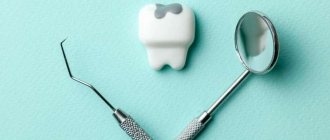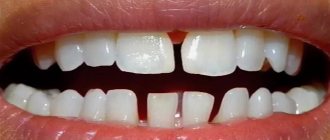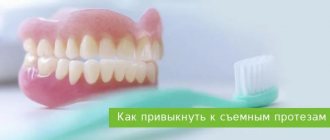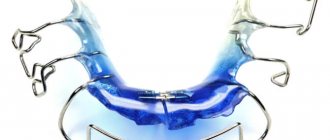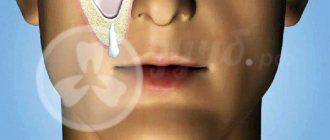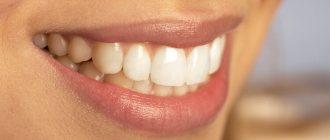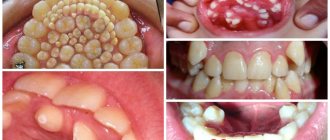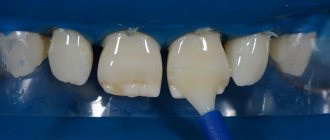The history of cosmetic dentistry - the art of keeping teeth beautiful and (if possible) healthy - goes back several thousand years. Lenta.ru begins a series of materials devoted to the development of this branch of medicine since almost prehistoric times.
Attempts to restore teeth for the practical purpose of allowing their owner to chew food were crowned with relative success only in the 19th century. But in terms of dental decoration, humanity succeeded much earlier - and not at all in enlightened Europe.
The dead will help
The first dentist in the world, whose name is known for certain, was the Egyptian Hesi-Ra, who lived in the 27th century BC and served Pharaoh Djoser. The inscriptions in the tomb of Hesi-Ra call him not only “senior over the royal scribes” and “chief architect”, but also “dentist.” It is not known for certain what Hesi-Ra did with Djoser’s teeth, but he did create the pyramid at the foot of which he was buried. Nevertheless, dentistry in Egypt clearly developed quite intensively. The Ebers Papyrus, dating from the 16th century BC, gives eleven dental tips, including a recipe for a composition reminiscent of a modern composite filling: filler (ground barley), binder (honey) and antiseptic (yellow ochre).
The ancient Egyptian civilization also knew dental implants: in the mummy of one of the pharaohs of the 10th century BC, researchers discovered a copper tooth implanted into the jaw; Also preserved is probably the first dental bridge in human history - two donor teeth attached with copper wire to the lower jaw of an unidentified mummy from the 20th century BC. It is unknown, however, whether these prostheses were made during life or placed before mummification for purely aesthetic purposes (most modern researchers are inclined to the second).
Bridge with donor teeth
Photo: egyptopedia.info
The same is likely true of an iron tooth found on the jawbone of the skull of a noble Celtic woman who died about 300 BC in what is now France. The lack of anesthesia made the implantation process almost impossible due to unbearable pain - and even if the operation could be completed without death, it was inevitably followed by implant rejection - either due to infection or due to tissue incompatibility (the idea of transplanting the teeth of dead people or animals was popular among ancient physicians).
How we learned to brush our teeth: almost 2 million (!) years of trial and error
Doctors and healers spent time studying teeth and creating recommendations that allowed patients to monitor not only the cleanliness of the oral cavity, but also its health. In Rome, the first tool for removing teeth was invented, ancient specialists learned to fix loose teeth and insert artificial ones, and in Greece the first description of dental diseases was made. Attention was also paid to the aesthetic part of the issue - for example, freshness of breath. If the advice on brushing your teeth makes sense, even though it was recommended to rub your teeth with your finger, then some ways to keep your breath smelling good seem strange. The ashes of burned animals - rabbits, mice, goats, wolves - were especially popular, but there were other ideas, for example, rinsing the mouth with the blood of a turtle three times a year.
From secret potions to the first brush and back
In the Middle Ages, it was fashionable to take care of teeth with the help of various elixirs, which were made by monks and doctors. The mysterious and slightly mystical atmosphere of this time made itself felt - recipes for potions remained secret. The tooth elixir of the Benedictine fathers enjoyed particular success: the drink, invented approximately in 1373, was sold in pharmacies until the beginning of the 20th century!
In 1497 (98) the first brush was invented. This happened in China. Residents of the northern regions of the Celestial Empire attached pork bristles to a bamboo stick. A little later, traders exported the new product to Europe, but the brush did not find popularity there. It was believed that using such a brush was not very decent. By the way, in Russia, where brushes, judging by excavations, appeared around the same time, Peter I forbade their use. A special royal decree ordered that brushes and other devices be replaced with a cloth and crushed chalk.
A starting point
In the 17th century, Europeans brushed their teeth with salt. The Dutch scientist Antonie van Leeuwenhoek, who invented the microscope, was very surprised when he discovered that even despite brushing with salt, many microorganisms remained on the teeth. The first tooth powders, which became the ancestors of modern toothpastes, appeared at the end of the 18th century in Great Britain. However, they contained substances that were more likely to harm teeth - brick dust, clay fragments. At that time, only wealthy people used toothbrushes; the rest used their fingers.
Already in the 19th century, more or less gentle versions of tooth powder made from chalk and magnesium carbonate appeared, and in 1873 the first toothpaste appeared in America - liquefied tooth powder. Further - more, people methodically and gradually improved the composition: introduced new chemicals that not only cleaned, but also treated teeth, strengthened enamel, came up with new tastes, and created more convenient tubes.
In 1937, nylon was invented, which made it possible to make the modern brush. Lightweight, quite durable, elastic, moisture-resistant, nylon in all respects “won” over pig bristles and horsehair. Nylon bristles dried faster and bacteria did not have time to multiply, and the material itself was soft and did not scratch the gums and teeth. From this point on, technology began to develop very quickly, and people no longer returned to fingers, toothpicks and wooden “brooms”.
Flying sneakers and trips to the moon
Today we don’t just brush our teeth every day - many people carry a toothbrush with them to work so as not to miss the procedure after meals. A brush is no longer a stick with bristles, but a multifunctional gadget that not only makes the process easier, but often performs all the actions for a person. Many users have long preferred electric toothbrushes, and manufacturers are improving technology every day. For example, one of Philips’ new products, the DiamondClean Smart toothbrush, works with an application that is installed on a tablet or smartphone.
My golden ones
Since it was not very possible to cure damaged teeth, ancient dentists focused on at least somehow achieving aesthetic perfection. This is how dental crowns were born, attached to the remains of a decayed tooth. The first known examples date back to the 2nd century, they were found in the territory of modern Tuscany, Italy. The material was gold - as, indeed, centuries later. Already in our century of high-strength plastics and composite materials, the American Dental Association indicates the following advantages of gold crowns (today, by the way, they are made from an alloy with copper and other metals): tightness, wear resistance, minimal removal of healthy tissue, low rejection. And besides, as the website of a famous toothpaste brand notes, “you will have a simply unique smile.”
A “unique smile” was worth a lot from the then universal value equivalent, so less wealthy people tried dental crowns made from the teeth of corpses or animals. Such crowns made it possible to at least chew not very hard food, but they smelled disgusting and over time could lead to infection in the oral cavity. The smell, however, did not bother anyone in those days - the ancient Romans, for example, used toothpaste based on human urine (the ammonia it contained served as a bleaching agent), and in medieval Europe, brushing teeth, and washing the body in general, was not particularly were interested.
Mayan inlaid teeth
Photo: National Museum of Dentistry
Overseas, in the still undiscovered America, the Mayans achieved great success in the field of cosmetic dentistry. The men of the tribe decorated their teeth with inlays of precious stones, skillfully embedded in carefully drilled holes - apparently, Mayan dentists were quite well versed in anatomy, since the apertures of the skulls found do not reach the pulp. According to the Mexican anthropologist Jose Concepcion Jimenez, such decorations were not a sign of special social status, but served a purely decorative purpose and were used by people of all walks of life. As the scientist notes, such decorations are absent from the found royal Mayan mummies.
Water treatments
As you know, in Antiquity everything was fine with washing: in Rome alone in the 4th century AD. e. the number of public baths reached a thousand. The baths replaced the Romans with both a bathhouse and a club, and they happily spent several hours every day in them. But with the fall of the Roman Empire, dark times came for water treatments. Although perhaps not as dark as we think?
The most common myth about hygiene on the RuNet is that medieval Europeans almost never washed. Louis XIV is usually cited as an example (despite the fact that he has nothing to do with the Middle Ages), who supposedly washed himself either once or twice in his life and exuded such a scent that foreign envoys almost fainted.
In fact, the Europeans, of course, washed themselves. Yes, much less often than these days, but not because they were indifferent to cleanliness and “got used to” dirt, as is commonly believed. It’s just that a bath in the absence of running water and sewerage was an expensive and labor-intensive pleasure: fetch several buckets of water, heat them, and after the procedure somehow drain the dirty water. If we were put in such conditions, we would also hardly wash ourselves twice a day.
The situation with water procedures in Europe was uneven: somewhere (for example, in Italy, which preserved the remnants of Roman traditions, and in Spain, which experienced strong Arab influence) the situation was better, somewhere worse. But in general, Europeans still washed with more regularity than myths ascribe to them. As Professor Simone Roux writes in her book “Daily Life in Paris in the Middle Ages,” wealthy homes had “bathing vats, basins for washing hair or feet, and pedestal washbasins installed in the hall so that one could always wash one’s hands. Baths were taken at home if there were appropriate containers and maids to fetch and heat water. The poorest had to be content with swimming in the Seine - in the summer. For wealthy Parisians, there were public baths in the capital: there they steamed or bathed in hot water.”
According to the tax census of 1249, there were 26 public baths operating in Paris; according to many historians, there could have been much more of them, just some evaded taxes and worked unofficially. The situation was approximately the same in London: the rich had baths and bathhouses at home (some even had running water!), the rest had the Thames, basins with jugs and public baths, of which there were 18 in 1374.
English baths were often located under the same roof as bakeries: the heat from the ovens was used to heat water. Zero waste, so to speak.
In Vienna in the same 14th century there were 29 public baths, in Nuremberg - 9. The historian Fernand Braudel in his book “Structures of Everyday Life” writes that “baths were the rule throughout medieval Europe - both private and very numerous public ones.” Of course, baths and saunas were not a daily practice, but even without them, medieval people tried to maintain basic hygiene standards - at least washing their face, hands and brushing their teeth every day.
So just in the Middle Ages, things were not bad with hygiene. But in modern times the situation worsened. This happened for several reasons. Firstly, syphilis appears in Europe, and public baths (in which they not only washed, but sometimes indulged in debauchery) contributed to its spread. Secondly, most doctors of that time adhered to the theory of “miasms” (diseases that are carried through the air) and believed that water opened the pores for them - which means that the less often a person takes a bath, the less risks. Therefore, regular baths were replaced by rubbing with a linen rag (for the rich - dipped in all sorts of perfumes like rose water, for the poor - just in water).
Europeans compensated for their infrequent washing by changing their underwear as often as possible. As historian and history professor Peter Ward writes in The Pure Body: A Modern History:
“People associated cleanliness with cleanliness of clothing, primarily underwear. It was believed that white linen, worn under clothing, absorbed dirt and body secretions and cleansed the skin as it was worn.”
In addition, frequent changes of linen (which were easy to wash) eliminated the need to frequently clean the outer dress. It was made from expensive materials like silk and velvet, which could be damaged when washed. Therefore, such clothes were washed as rarely as possible, making do with dry cleaning, shaking out and airing.
Baths came into fashion again only at the end of the 18th and especially in the 19th centuries, when another round of evolution of concepts about hygiene occurred. Washing, argues Peter Ward, now distinguished the wealthy from the lower classes—or so they liked to think. This means that the more often you wash, the higher your social status. And soon progress came: with the introduction of water supply and sewerage, baths became much more accessible.
And what about the unfortunate Louis XIV - did he really wash twice in his life? As historian Ekaterina Mishanenkova reports, he was still cleaner than they write about him on the Internet. His every day began with lengthy hygienic procedures, including bathing, rubbing, combing and shaving. They also wiped the king during the day - if, for example, “His Majesty, having returned from playing ball, was sweating heavily.” Contemporaries recalled that Louis loved swimming in the river, where special fenced baths were arranged for him. It is impossible to say with certainty how many times in his life he took a bath, but what is certain is that each of his residences had spacious “bath apartments” with all kinds of baths, pools and steam rooms. It's unlikely that it's just for beauty.
Beauty in Filipino
In 1530, the anonymous “Little Book of Medicine on All Types of Dental Diseases and Sicknesses” was published in Germany, the first medical practical guide in the history of Europe, entirely devoted to dental treatment. Among other things, it contained advice on making gold fillings. But around the same time, Europeans encountered amazing advances in cosmetic dentistry among the “Asian savages.”
The Spaniards, who began colonizing the Philippines in the mid-16th century, were faced with the practice of decorating teeth by local tribes, which amazed them with its complexity and high cost. The islanders deliberately blackened their teeth, explaining that “dogs and pigs have white teeth, and we should be different from them.” But those who could afford a more refined distinction from the animal world went further. Jesuit Pedro Chirino described this custom among the Tagalogs: “They even insert gold plates between the teeth as decoration. They drill a neat hole into the center of the tooth, which they then fill with gold, so that this gold dot shines in the middle of the black tooth. And they find this very beautiful.” It is curious that the Filipinos themselves often looked at the colonialists as “barbarians with white teeth,” considering it unhealthy not to have the habit of blackening their teeth.
The Tagalog dictionary, compiled at the beginning of the 17th century by Franciscan Pedro de San Buenaventura, even mentioned a special term for these decorations - pusal. By the beginning of the next century, however, the natives were weaned from these aesthetic delights - since Catholic missionaries considered blackening and decorating teeth to be a challenge to God's providence; Moreover, the Spaniards also had a more practical use for the gold from the mouths of the aborigines. The custom, however, returned at the end of the 18th century in a slightly modified form. The wives of wealthy Inibaloi men inserted solid gold plates under their lower lips, which were removed only for meals. This strange decoration, called a chakang, in addition to demonstrating status, did not allow Inibaloi ladies to speak - perhaps that is why the tradition lasted until the first quarter of the twentieth century.
Hand washing
People have been washing their hands since ancient times. Even the ancient Egyptians prepared detergents from a mixture of alkalis, fat and vegetable oils, the Assyrians used a mixture of alkali and castor oil, and in Ancient Rome there were many recipes for making soap. In medieval Europe, since at least the 900s (and most likely earlier), soap was produced on an industrial scale, and dinners, at least in aristocratic houses, always began with hand washing. Considering that back then people ate mostly from shared dishes and without cutlery, such a measure seems justified: it is not very pleasant to eat from a plate that has been touched by the dirty hands of your table neighbors.
Unfortunately, understanding the connection between dirty hands and disease was much worse.
Back in the 19th century, even a doctor could easily, after completing an autopsy of a corpse, go to deliver a baby without washing his hands.
The connection between hand washing and health was first discussed by the Hungarian doctor Ignaz Semmelweis in 1848. Dr. Semmelweis noticed that in two Viennese maternity wards the mortality rates of women in labor were very different, although the conditions were almost identical. The only difference was that one of the hospitals also had a morgue, and doctors worked there at the same time.
Semmelweis suspected: perhaps the fact is that doctors carry “particles of dead bodies” in their hands. He suggested that his colleagues, as an experiment, wash their hands and tools in a chlorine solution after each procedure. After this innovation, the mortality rate of women in the maternity ward of the hospital where Semmelweis worked fell from 18% to 1%. However, even the enormous success of the experiment could not convince the rest of the doctors: the very idea that they could be carriers of infections seemed offensive to them. The further fate of Semmelweis was tragic: he was fired from his job, he suffered a nervous breakdown and, understood by no one, ended his days in a psychiatric hospital.
But in subsequent years, science moved forward, doctors learned a lot more about germs and gradually began to take hand washing seriously. And by the beginning of the 20th century, people began to understand that hand washing is a good habit not only for surgeons, but for everyone else. This was largely facilitated by the first anti-tuberculosis campaigns: the population was actively explained that tuberculosis is not something that you inherit from your grandmother, but something that you can catch if your grandmother coughs on you. That’s why it’s so important to practice good hygiene, including washing your hands often.
For a time, people became literally obsessed with hygiene (some researchers argue that this was the reason why men at the turn of the century were less likely to grow beards: they were afraid of germs).
But with the spread of vaccines and antibiotics, the habit of washing hands began to be neglected again: to generations of “flower children” it seemed like a mossy bourgeois prejudice.
Only with the spread of HIV did people again remember the need to wash their hands - paradoxical, given that the virus is not transmitted through household contact.
Before the pandemic, however, things were not ideal. According to a 2009 study, only 69% of American women and 43% of men washed their hands after using the toilet, and even less before eating: 7 and 10%, respectively. However, if the study had been carried out this year, the figures would probably have been much higher: if the coronavirus pandemic has brought us anything useful, it is the habit of washing our hands at every opportunity.
Something more modern
The full history of dentures begins with the times of Louis XV and his court dentist Pierre Fauchard. He made designs for prosthetics for people close to the king, at court. A true fan of his craft, Pierre Fauchard was the first to make thickened wires with springs that fixed a dental prosthesis. Impressions had not yet been invented, but springs could help in flexible installation, based on the individual characteristics of patients.
It is also worth remembering the professionalism of Pierre Fauchard in the development of pinned teeth - the prototype of future bridges. Well, very good news: for the first time, a French dentist began to try to choose the color of a prosthesis that matches the shade of his natural teeth.
Pierre Forchard and his instruments
Modern orthopedics
The history of dentures in modern dentistry has developed more clearly since the late 19th century. It was that period that marked the active study of orthopedic structures. Dentistry begins its development as a science, and history supports experiments and data. Restoring chewing function and more gentle implantation of dentures is the main task of dentists. Dental prosthetics is gaining momentum and developing among specialists in each country. After a while, it becomes a standard service of clinics.
Fixed prosthesis, our days
Fixed prosthetics is an innovative area of dentistry. The All-on-4 system takes into account all the patient’s characteristics and is suitable even for those with diabetes and other diseases. And most importantly, a permanent prosthesis is manufactured and installed in just 24 hours!
Improper brushing of teeth
Let's admit it, we brush our teeth automatically. And we often do it wrong: we clean them with movements left and right, sherk-sherk. With this method of cleaning, soft plaque is transferred from the surface of the teeth to the interdental spaces and becomes clogged there. As a result, there is a danger of gum damage and the appearance of a wedge-shaped defect, especially on protruding teeth. A wedge-shaped defect is a lesion of a tooth in the area of contact with the gum. It looks like a step that resembles a wedge. The dimensions can range from barely noticeable to complete chipping in the future.
See what happens when we brush our teeth across their growth:
Are there ways to prevent a recession?
What should I do to prevent the necks of my teeth from being exposed? Firstly, pay due attention to home hygiene - brush your teeth 2 times a day, morning and evening, use additional care products (dental floss, irrigator, etc.). Our dentists will help you choose a toothpaste and brush and teach you the correct brushing technique.
Secondly, undergo professional hygiene and preventive examinations every six months: they will prevent the development of diseases that lead to recession.
Thirdly, correction of bite defects and timely prosthetics are necessary.

